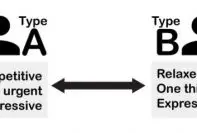Traits, in psychology, refer to the ways in which we generally describe a person. The descriptive terms such as out-going, short tempered, generous are all traits. Trait approach is one of the most vital areas of study in psychology that helps identify a person’s personality. Traits can be defined as a stable characteristic that causes a person to depict a response to any situations in certain ways. Trait theories indicate that the traits are always constant regardless of the situations.
An individual, as a whole, doesn’t just have a single trait, but the variety of trait forms of personality. These trait forms are unique from one individual to another. The theory designated to identify and measure individual personality characteristics can be defined as trait theory.
Trait theory approach focuses on personality differences between individuals.
Gordon Allport’s Trait Theory
Psychologist Gordon Allport was among the firsts to come up with a personality trait theory. He came about with an astounding discovery in 1936, which showed that more than 4000 words in an English language dictionary described personality traits.
Allbort viewed traits as building blocks of personality. According to him, there are three classes of traits.
Cardinal Traits
Cardinal traits are the traits around which a person organizes his whole life. Allport suggested that these traits are developed later in life, and are in fact quite rare. But, these traits play such an important role in a person’s life that they often become synonymous with the names of the person. Meaning, a person might be specifically known for these traits. E.g.: greed, lust, kindness, narcissism.
Central Traits
Traits representing major characteristics of a person are referred as central traits. These can also be considered as the characteristics that lead to the foundation of an individual’s personality. Example of central traits: shy, anxious, intelligent, dishonest.
Secondary traits
Secondary traits refer to the general behavior patterns that only appear under certain circumstances. An example would be getting nervous to speak in public.
Hans Eysenck
Eysenck is the most famous British psychologist. He considered that there are two major dimensions of personality which account for the many different types of person we encounter. They are:
- Extroversion
- Introversion
He proposed a model of personality based on these two universal traits, and the third dimension later added by the psychologist himself.
1. Introversion/Extroversion:
This dimension encompasses shyness to sociability. Introversion involves focusing energy on inner experiences, while extroversion refers to focusing energy on environment and people. To put it bluntly, introverts are shy and extroverts are sociable.
extrovert <—-> introvert
2. Neuroticism/Emotional Stability:
The dimension encompasses moodiness to even temperedness. Emotional stability refers to the literal meaning of the term, the state of being emotionally stable or constant. And, neuroticism refers to instability of emotions, causing a person to become upset or emotional.
neurotic <—-> normal (or stable)
3. Psychoticism
This dimension was included in Eysenck’s earlier model. He added this dimension after conducting a study on mentally ill individuals. People high on this trait suggests that the individual might not be normal and might have trouble dealing with reality. General characteristics shown by these people are of being hostile, non-empathetic, manipulative and antisocial.
Criticisms of Eysenck’s Theory
- The model was initially developed from a very small sample, which has led to oversimplification.
- The testing is entirely based on self-reports, and therefore, it is likely to be heavily influenced by the respondent’s mood at the time.
Raymond Cattell’s Trait Theory
Unlike Eysenck, Cattell based his theory on various sources rather than just self reporting. Cattell’s trait theory has been built around the use of factor analysis, a mathematical technique devised by Charles Spearman. With the use of factor analysis, Cattell reviewed and categorized a large number of traits, seeking the most basic and useful ones, and developed a scheme for classifying them.
This brought down the Allport’s initial list of over 4000 words to 171 different traits. He further identified the closely related terms and the final list was prepared of 16 basic source traits. According to him, these are the base of all human personality.
Cattell discovered that some traits are surface traits, easily visible to any observer, and others are source traits, the underlying structures responsible for the surface traits.
- Surface Traits – clusters of related behaviors observed in a given situation.
- Source Traits – Sixteen basic dimensions of personality which are the roots of all behavior.
Sixteen factors of Personality, all bipolar.
| reserved | outgoing |
| less intelligent | more intelligent |
| affected by feelings | emotionally stable |
| submissive | dominant |
| serious | happy-go-lucky |
| expedient | conscientious |
| timid | venturesome |
| tough-minded | sensitive |
| trusting | suspicious |
| practical | imaginative |
| forthright | shrewd |
| self-assured | apprehensive |
| conservative | experimenting |
| group dependent | self-sufficient |
| uncontrolled | controlled |
| relaxed | tense |
Source: Hayes & Orell (1993)
The Big Five Factors Theory of Personality
Lots of researchers and psychologists believed that Eysenck’s theory focused on too few traits while Cattell’s theory focused on too many traits. As a result, a new theory was established, namely “The Big Five Factor Theory of Personality”. Although researchers and related folks often disagree about the terms assigned to these dimensions, the labels developed by Costa and McCrae in 1985 are still in use today.
- Openness
- Conscientiousness
- Extraversion
- Agreeableness
- Neuroticism
Critical Evaluation of Trait Approach to Personality
No theory is full proof, and everything has a loophole. While the trait theories of personality does cover some grounds that other personality theories lack, such as Psychoanalytic Theory of Freud, there are weaknesses to this approach.
Major criticisms are:
- Trait theory approach fails to predict individual’s behavior. Even though an individual might score high on a particular trait, he/she might differently.
- Another major weakness of these theories is their inability to explain the emergence of differences between individual personalities.




